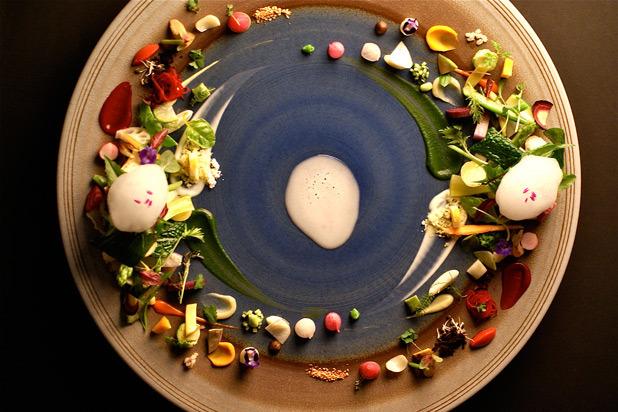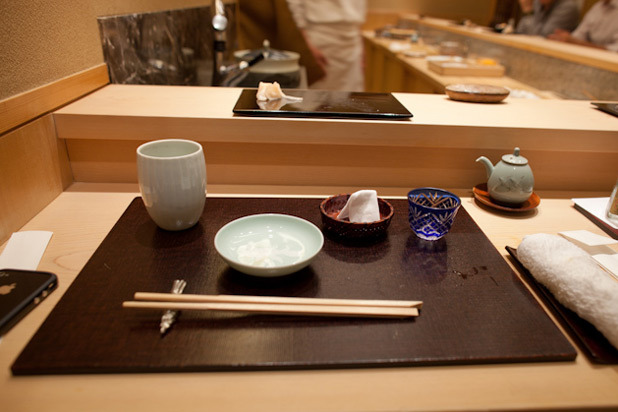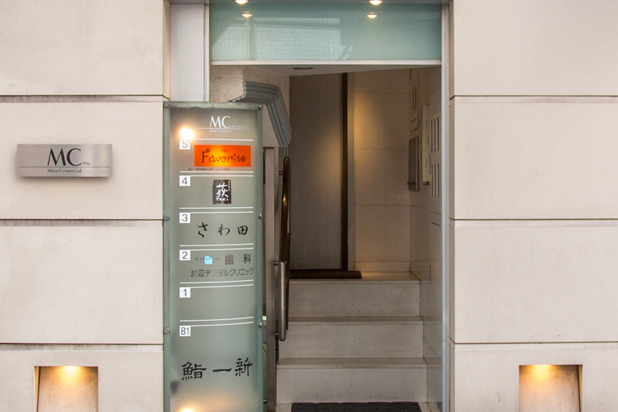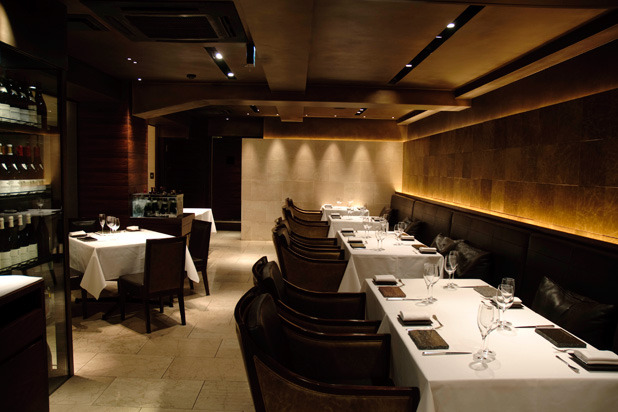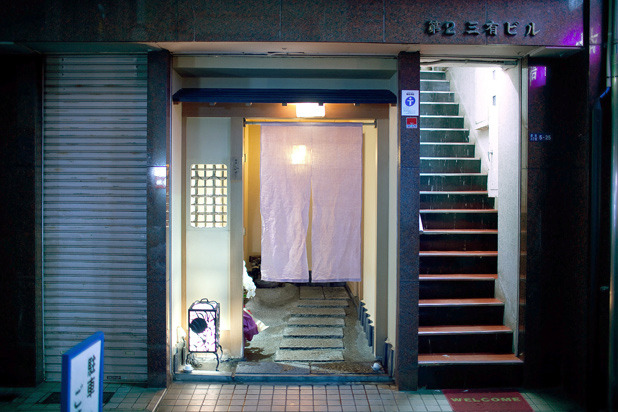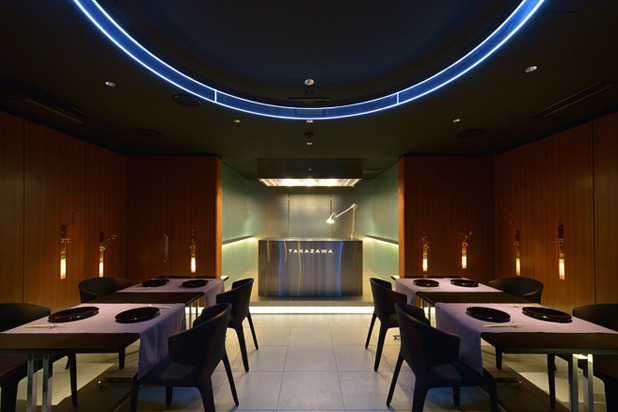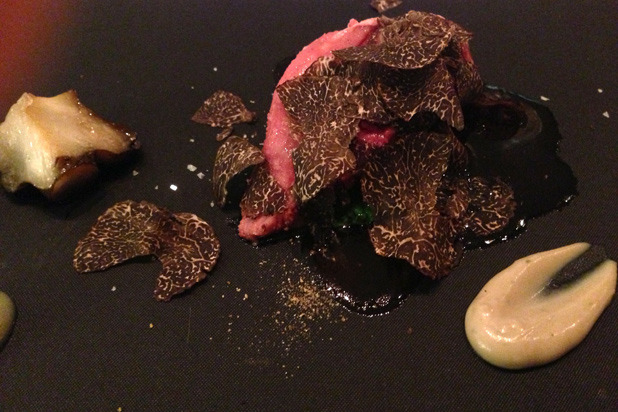16 Best Restaurants In Japan Slideshow
This 65-year-old classic, a Michelin three-star, with its lush garden setting and simply but handsomely furnished dining rooms, offers one of Kyoto's finest kaiseki experiences. Depending on the season and the availability of the best ingredients, the 10-course menu might include such delicacies as pickled tilefish with shiitake mushrooms and mountain potatoes; hamo eel in yuzu broth; ice fish with pickled vegetables, mustard leaves, and eggplant; Kyoto beef en gelée... Unusually for a restaurant of this type, there is a good wine list as well as the expected selection of quality sake.
15. Santouka Ramen (Asahikawa, Japan)
The founder of Santouka Ramen — which today has outposts from Toronto to the Philippines — was inspired to open his first restaurant after watching the Japanese ramen-shop-based comedy Tampopo with his family. He took them for a quick post-movie ramen meal at a local noodle place, the story goes, and was so disappointed in the quality of what they ate that he vowed to make ramen of his own. After refining his recipe at family dinners, he opened his first tiny ramen shop in 1988, in Asahikawa on the island of Hokkaido. Santouka's simple signature shio (salt flavor) ramen is topped with Japanese pickled plum; another specialty is tokusen toroniku (pork) ramen, made with pork cheeks that, says the restaurant, are as tender as fatty tuna.
14. Hajime (Osaka, Japan)
It should be no surprise that three-Michelin-star Hajime landed on San Pellegrino's list of the 50 Best Restaurants in Asia (at an impressive number 21 spot). Chef Hajime Yoneda bases his contemporary French-inspired cuisine, according to their website, on "the balance and harmony of nature, the Earth, and space." A dish called "minéreal," for instance, is made up of 105 different vegetables and herbs, and sakaramasu, an uncommon fish called masu salmon or cherry salmon in English, is cloaked in puréed lemon vinaigrette and garnished with kumquat and fennel. Later on in the tasting menu, parsnip soup with truffle ice cream offers a surprising contrast of flavors and temperatures, and for dessert, croissant-flavored ice cream with a cacao mousse is simply stunning.
13. Sushi Mizutani (Tokyo)
Ten seats, three Michelin stars, two to three months to get a reservation (and nobody speaks English on the phone) — and definitely worth a visit. Master sushi chef Hachiro Mizutani, who studied under sushi legend Jiro Ono, is a perfectionist, especially famous for his nigiri (the steamed abalone version is a must) and for his subtle use of vinegar, and his rice is said to be some of the best in Tokyo. He works alone, preparing everything himself. The atmosphere here is relaxed but sophisticated, but two caveats must be issued: Though it is located in the popular Ginza district, it is hidden away on the ninth floor of an elevator building, with signage only in Japanese; and it is cash-only — and lots of cash, at that.
12. Nihonryori Ryugin (Tokyo)
Under the auspices of chef Seiji Yamamoto, Tokyo's RyuGin was awarded three Michelin stars for 2013. While the dragon-themed dining room might be a bit sparse, the food and service are anything but. The cuisine is a play on traditional Kyoto fare, celebrating the freshest seasonal ingredients. The à la carte menu boasts 50 dishes, and the 10-course Spring Gastronomy Menu includes an "array of spring vegetables with one sip of clam clear soup" and other dishes of varying temperatures, including an intriguing-sounding "'Flavored Dish' to feel the Grace of Japan." The staff is incredibly knowledgeable and can walk you through the nuances of the entire meal, and the kitchen is accommodating to preferences and allergies.
11. Sawada (Tokyo)
Sawada is a six-seat, husband-and-wife run Ginza sushi restaurant that offers an impeccable omakase menu and an intimate dining experience. At this Michelin two-star establishment, chef Koji Sawada prepares a three-hour-long feast that offers some of the finest seasonal wild seafood from all over Japan, some of it cured or lightly torched. David Chang has called this his favorite sushi bar in the world, and it's easy to see why.
10. Ishikawa (Tokyo)
A sanctuary of tranquility within Tokyo's bustling streets, Ishikawa features unique Japanese cuisine from renowned chef Hideki Ishikawa. Despite winning three stars from Michelin, the chef is known for his modesty and his diner-comes-first approach to service. Located in the so-called geisha district of Tokyo, the restaurant operates under the centuries-old concept of omotenashi, which means meeting a diner's expectations and anticipating any unforeseen ones. While you'll enjoy a daily menu of chef's selections in the sleek, teak wood space, past diners have experienced elegant dishes such as grilled eel with sweet onion and beef tongue with turnip and mountain vegetables.
9. Quintessence (Tokyo)
Quintessence is a Michelin three-star restaurant under the direction of chef Shuzo Kishida, who refined his skills at L'Astrance in Paris. His dedication to serving the freshest seasonal ingredients led him to offer only one fixed-price carte blanche (chef's choice) menu daily — seven courses at lunchtime, 13 at dinner. Examples of his fare include smoked salmon "without the smoke," wild mushroom sablé, three-hour roasted shonai-sangen pork with potatoes, mushrooms, and broccoli.
8. Kojyu (Tokyo)
This hidden gem, specializing in the Kyoto-born kaiseki experience, is a favorite among diners looking for a special-occasion experience. Diners can opt to sit at the warm and inviting counter, which has a minimalist approach and soft lighting that fosters calm, or in private dining rooms that offer either tatami-style or normal seating. The particulars of the meal change constantly, but expect such fare as Hokkaido uni with horse crab and eggplant, dashi soup with shrimp ball and matsutake mushrooms, octopus with pumpkin and winter melon, and excellent sashimi.
7. Sushi Saito (Tokyo)
Located in Akasaka, across the street from the U.S. embassy, Sushi Saito is widely regarded as one of Tokyo's top sushi restaurants. While the spotlight may currently be on Sukiyabashi Jiro for many visitors to Japan, it's important to remember that there are many other fish in the sea. Master sushi chef Takashi Saito has worked hard to earn his three Michelin stars, and the fact that his establishment has only seven seats and is located in a parking garage hasn't deterred diners from seeking out a meal here — a relative steal, considering the quality. If available, try the three tunas: lean akami, medium-fatty chu-toro, and the much-prized o-toro, which has the most marbling.
6. Kikunoi Honten (Kyoto, Japan)
At the foot of Higashiyama Mountains, Kikunoi is an elegantly appointed restaurant (lacquered wood, delicate screen paintings, contemporary variations on traditional Japanese seating), with a cuisine tied intimately to the seasons. The kyo-kaiseki menu, typical of Kyoto, offers a balanced progression of exquisite dishes, both classical and innovative. From sake-steamed sea bream milt and sea eel and yuba rolls to vinegared firefly squid with wild vegetables and pea soup with shrimp balls, a meal here will be an unforgettable experience.
5. Takazawa (Tokyo)
Chef Yoshiaki Takazawa opened his restaurant as a two-table hideaway in 2005, dubbing it Aronia, the genus name of two species of chokeberries — powerful, highly astringent, antioxidant-rich, deciduous North American berries used in some wines, jams, syrups, juices, and teas. In 2012, he renamed the place after himself, but still serves only 10 diners an evening. Behind an unmarked door in Tokyo's Akasaka District, at a shiny, illuminated chef's counter, he offers $220, 10-course meals of great imagination. There's the playfulness of a foie gras crème brûlée with pear sauce that resembles a candle, the trompe l'oeil of a "potato" that's actually potato purée, a reinvented steak tartare that employs venison and uni instead of steak and egg yolk, and a curry ice cream. along with all the burning-leaf-as-atmosphere, think-about-your-food-as-more-than-food, and modernist technique you might expect.
4. Endo Sushi (Osaka, Japan)
This sushi spot has definitely had enough time to earn its beloved status: it's been around for more than 100 years in Osaka's central wholesale fish market. Crowds flock to this spot as early as 4 a.m. to wait until its 5 a.m. opening, and the place stays crowded until it closes around 2 p.m. The chef's choice (omakase) menu is the thing to order. The variety and freshness of the fish and shellfish is remarkable — and diners brush soy on their sushi with small wood brushes, a lovely touch.
3. Le Musée (Sapporo, Japan)
It's a special restaurant that can do something to surprise and fascinate one of the world's most heralded avant-garde chefs, but Le Musée inspired Grant Achatz to report on a portion of his meal there, in which diners were invited into a room hung with grapevines and encouraged to eat the grapes: "The grapes were perfectly ripe and delicious and then they served us four courses that included different manipulations of those grapes. It was cool because you got the tactile feeling of experiencing the feel of those vines, and they prepared you for what was ahead." Located in Sapporo, on the northern Japanese island of Hokkaido, Le Musée is a small restaurant with about 30 seats, headed by Makoto Ishii, a chef who studied in Spain and France, and who focuses on the top-notch seafood and local produce of this northern region of Japan. Spain, France, and (especially) Italy all figure in Ishii's cooking, as does "molecular gastronomy." In addition to variations on grapes, Ishii might serve zucchini mousse topped with zucchini powder, local potatoes topped with carbonara foam, and even a first-rate version of spaghetti with clams.
2. Sukiyabashi Jiro (Tokyo)
Jiro Ono became a star after the 2011 release of the movie Jiro Dreams of Sushi, and deservedly so. An octogenarian sushi chef, considered by some to be the best in the world, who serves sushi in a 10-seat, modest-looking, sushi-only restaurant inauspiciously located in a Ginza subway station? Who, despite having been the first sushi chef to win three Michelin stars, notes, "Even at my age, I haven't reached perfection"? That's a pretty compelling story. You'll have to make a reservation weeks to months in advance, pay more than $300 per person for an omakase-only, 20-piece sushi experience that lasts just about a half-hour, and eat under what some have described as the intimidating glance of Jiro himself. (One of Jiro's sons, Takashi, runs a splendid sushi bar of his own in the Rappongi district.) But from quality of the fish and rice to the techniques used to prepare them, if you're a sushi fanatic, you should expect this to be one of the best meals of your life.
1. Michel Bras TOYA Japon (Toyako, Japan)
It's almost 6,000 miles from Laguiole, the knife-and-beef town in central France where Bras has his celebrated, eccentric Michelin three-star restaurant, to Toyako, on the northern Japanese island of Hokkaido, but somehow the French culinary innovator and his team have managed to translate his culinary magic to this new setting in the Windsor resort hotel. Bras' most famous dish, his gargouillou of young vegetables, seeds, and herbs, stars on the menu here as it does in France, though the vegetables, seeds, and herbs are locally grown or foraged. Other Bras classics like roasted scallops with hazelnut butter and seed-crusted pigeon breast with shiitake and quince purée are also present, and the cheese selection offers choices from both France and Hokkaido itself.


